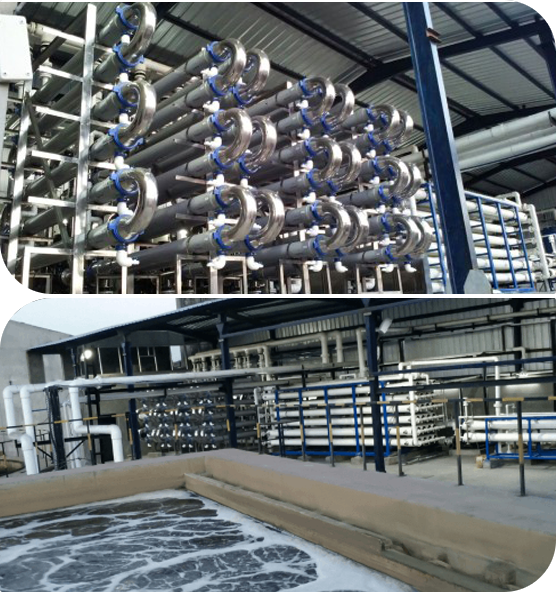
Waterman Engineers Australia is amongst the main producers of Zero Liquid Discharge program. A ZLD program is often a procedure system which is used to eliminate many of the liquid squander from a program. The objective of ZLD water treatment is to lower wastewater economically and develop potable drinking water that is certainly suit for regular use. Zero discharge system is a complicated treatment method technique that comprises ultrafiltration, reverse osmosis, evaporation and fractional electro deionization. And we are a very well-acknowledged supplier of ZLD devices.
In many Industries, such as electric power, oil & gas, substances, mining and Other folks, a large amount of wastewater is produced that has to be managed. Conventionally, this discharge of wastewater is completed by using a plant outfall into a surface drinking water system like an evaporation pond, or in some instances deep well injected. These procedures lead to a lot of environmental concerns by the public in lots of locations of the planet, as drinking water is a scarce source and its management need to be monitored. These issues have resulted from the institution of ZLD procedures by numerous industries to minimize their environmental footprint and enrich sustainability. And, Waterman Engineers Australia are best ZLD suppliers you could find for This method.
Attributes OF ZERO LIQUID DISCHARGE SYSTEM
The Qualities of a Zero Liquid Discharge program can differ based on the certain style and design and technological know-how used. Nevertheless, some frequent Qualities of ZLD techniques incorporate:
Drinking water Conservation: One among the principal goals of ZLD techniques is always to conserve h2o by reducing the discharge of liquid waste into the environment.
High H2o Purity: ZLD programs are intended to generate higher-high quality h2o that is certainly cost-free from impurities and contaminants, which makes them well suited for use in lots of industrial procedures.
Versatility: ZLD methods are often intended to accommodate a wide array of enter liquid streams, which makes them multipurpose and appropriate for use in different industries.
State-of-the-art Wastewater Treatment method: Zero liquid discharge systems use State-of-the-art wastewater therapy strategies to get rid of impurities and contaminants within the effluent, generating high-good quality h2o.
Waste Reduction: ZLD techniques assistance decrease waste by lessening the volume of liquid waste that needs to be disposed of and by developing a concentrated, strong waste substance that can be safely disposed of.
Strength Performance: ZLD systems could be Strength-intense mainly because of the higher Vitality necessities of evaporation and various wastewater therapy processes. Nevertheless, improvements in technological innovation are building Zero liquid discharge units extra energy-efficient and price-helpful.
Waterman Engineers Australia manufactures Zero Liquid Discharge (ZLD) units designed to take out all liquid squander, aiming to create potable drinking water and decrease environmental influence. Their ZLD methods typically include ultrafiltration, reverse osmosis, evaporation, and fractional electro deionization. Vital systems employed are Falling Movie Brine Concentrators, Forced Circulation Crystallizer, and others, with a two-move strategy of pre-concentration and evaporation/crystallization to Get better and reuse water. These systems are adaptable to unique industries, emphasizing drinking water conservation, high drinking water purity, waste reduction, and Electricity efficiency. Technological specs are varied and customizable, thinking of aspects like h2o source, stream charge, and feed h2o high quality.
The necessity for Zero Liquid Discharge (ZLD) methods arises within the necessity to handle environmental concerns connected with h2o scarcity and pollution. In industries like electricity, oil & fuel, and mining, large quantities of Zld System Manufacturer Zero Liquid Discharge System wastewater are created. Historically, this wastewater is discharged into bodies of drinking water, producing pollution and depleting thoroughly clean drinking water means. ZLD systems goal to reduce these impacts by managing and recycling wastewater within the industrial method, therefore conserving drinking water, lessening squander, and promoting sustainability.
When contemplating the specialized requirements of a Zero Liquid Discharge (ZLD) technique, significant aspects to concentrate on contain the water source it's going to handle, the program's circulation fee, the caliber of feed water, the stages of treatment associated, the Restoration amount of drinking water, solutions for focus disposal, supplies of building, working problems, and technique automation and Management. These aspects ensure the procedure's success, toughness, and efficiency in managing and recycling industrial wastewater.
Zero Liquid Discharge (ZLD) vegetation supply Advantages which include drinking water conservation, waste reduction, and air pollution prevention, contributing to environmental sustainability. They are applicable in industries like ability era, oil and gas, chemical compounds, and mining, in which they assist in controlling industrial wastewater successfully, lessening the ecological footprint, and complying with rigid environmental regulations. These devices are vital in spots going through h2o scarcity and for industries aiming to enhance their sustainability and operational performance.
FAQs to get a Zero Liquid Discharge (ZLD) process frequently tackle its operational concepts, Expense-success, maintenance necessities, environmental impact, applicability across several industries, and regulatory compliance. These questions aid people comprehend the technique's Gains, technical needs, and suitability for their distinct wastewater administration requires.
one. Zero Liquid Discharge (ZLD) is really a wastewater remedy course of action meant to eliminate all liquid waste.
two. The system's components are influenced by the specific industrial procedure, wastewater composition, and regulatory needs.
3. Effluent remedy plants eliminate pollutants from textile effluents to stop environmental contamination.
4. Benefits consist of water conservation, air pollution reduction, and regulatory compliance.
five. The purpose is to reduce environmental effect by recycling water and reducing squander.
six-9. Effluent treatment crops are phases in wastewater remedy: Major (physical separation), secondary (Organic treatment method), and tertiary (Superior therapy).
ten. Unit functions include things like filtration, sedimentation, biological therapy, and disinfection.
eleven. Limiting parameters are factors that have an affect on the cure's efficiency, like pH and contaminant focus.
12. Structure issues contain flow amount, effluent composition, and wanted quality of dealt with water.